People of different generations, races and cultures have different beauty standards. For example, drooping shoulders on women in ancient China were considered beautiful, whereas westerners regard flat shoulders on women as more attractive. Sarawak also has its own definition of beauty - let us kick things off with the ring ladies of Borneo.
Bidayuh's ring ladies
About 45 km away from Kuching lies Kampung Semban - the village of the Bidayuh-Sembans. This is where the 'ring ladies' call home. Copper rings are worn by these women once they reach the age of 10. As they age, the number of rings are also increased.
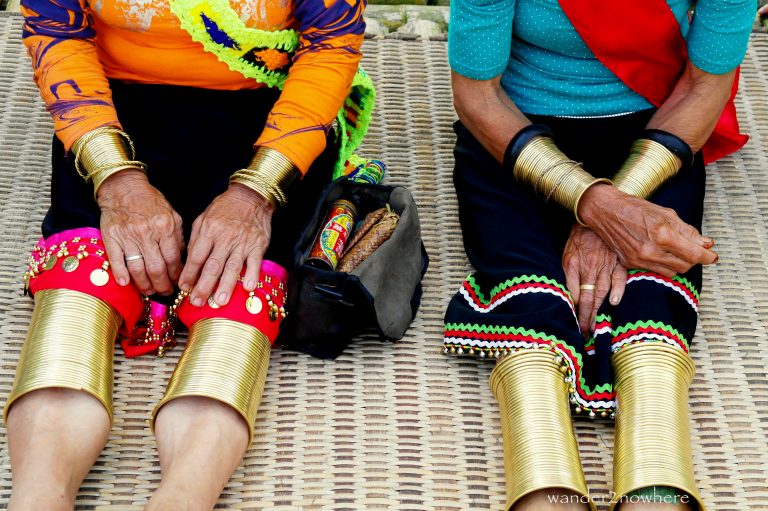
Source: wander2nowhere
They also don on beautiful pearl necklaces. In the past, the locals believed that the wearing of these rings would result in more slender arms and legs which were beautiful. This practice has, however, become very rare with the younger generation.
Elongated ear lobes (Orang Ulu)
One thing you can see among the senior population of the Orang Ulu tribal groups are elongated ear lobes. In the past, elongated ear lobes were seen as a sign of attraction. The longer the ear lobes of a woman, the more the men are attracted to her.When the babies of the Orang Ulu were just a few months old, their parents would pierce their ears and put heavy gold earrings on them. As they grew older, the earrings got heavier resulting in longer earlobes. The heaviest earrings could weigh up to half a kilogram.However, modern global beauty standards have changed and many women who had long ear lobes have had surgery to restore their lobes to normal shape. Only the elders - usually above the age of 60 - have retained their long ear lobes. Earrings, similar to those worn in the past, are still used when performing traditional dances as a remembrance to the tradition.
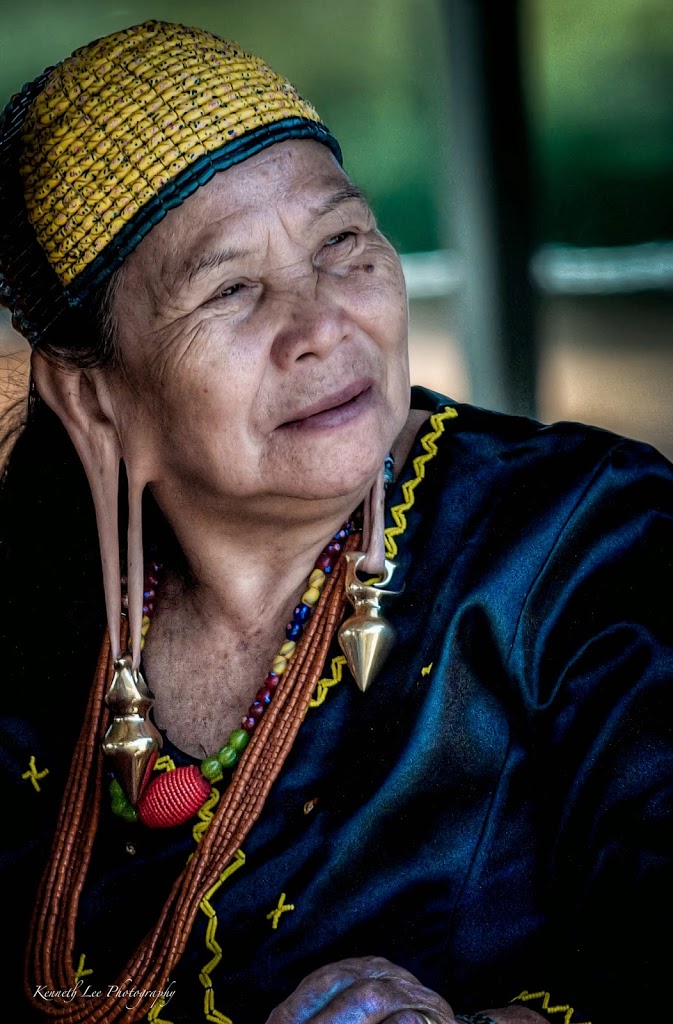
Long ear lobes (Source: Kenndy Lee Photography)

An old lady with long ear lobes
Flat foreheads (Melanau tribe)
The Melanaus in the past considered round faces beautiful. As such, many parents would use a wooden device known as Tadal to flatten the forehead of their children. The Tadal is a wooden board measuring 24cm long and 9cm wide. A soft pad is fastened to the middle of the board, then the board is placed horizontally on the baby's forehead.This tool applies pressure to the baby's forehead for about 15 minutes at a time - usually when the baby is sleeping. Depending on the pressure, 10 to 20 sessions would be carried out over successive days to bring about the desired result of a moon-like face. It is said that this face shape is most suitable to wear the traditional head gear decorations.
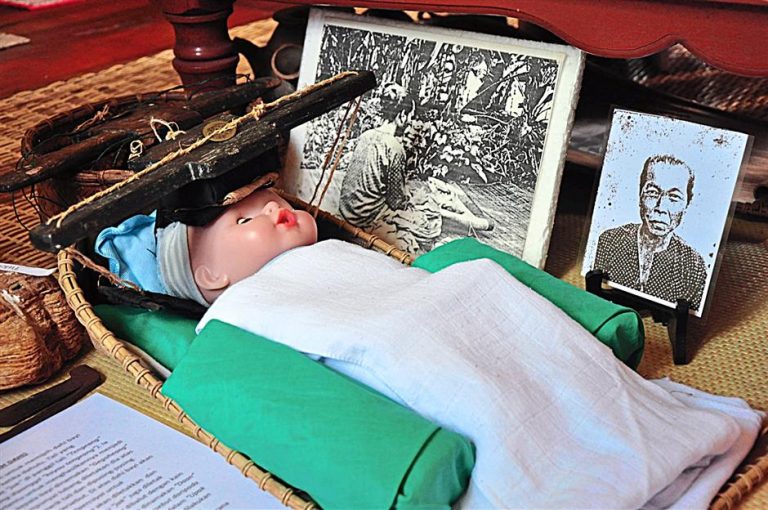
Tool 'Jak' (Image source: The Star Online)
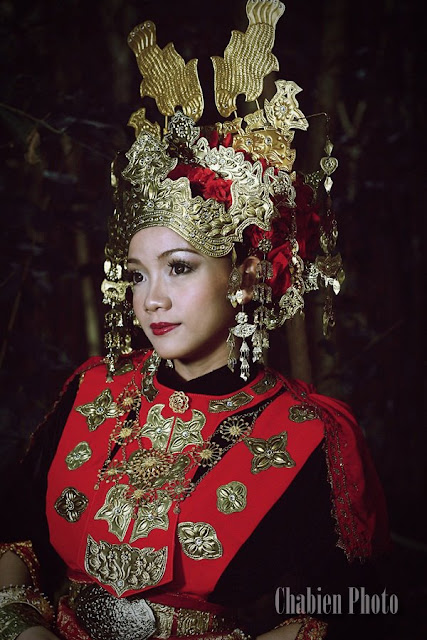
Melanau tribe's traditional clothing (Source: Chabien Photo)
Tattoos (Kayan tribe)
The Kayan tribe are closely linked to their tattoos. Tattoos are a symbolism of beauty for the local women. During different stages of growing up, they will get tattoos on different parts of their bodies. First, they will get tattoos from above their fingers and ankles. The tattoos would gradually get inked to their arms and thighs. This process takes around 1 to 4 hours and it depends on the woman's pain tolerance. It is believed that the more tattoos a women has, the more attractive she is to the men. Traditional tools are used in the process. A small wooden hammer with an attached metal needle is used to create the traditional tattoos. Tattooists use black ink made from coal ash which is believed to contain sacred energy.
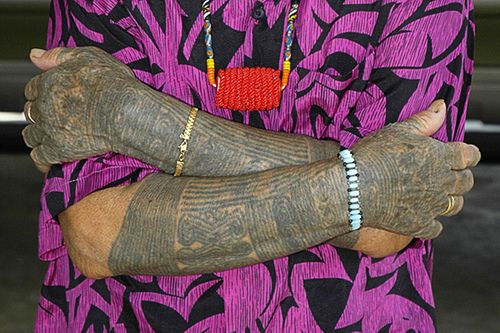
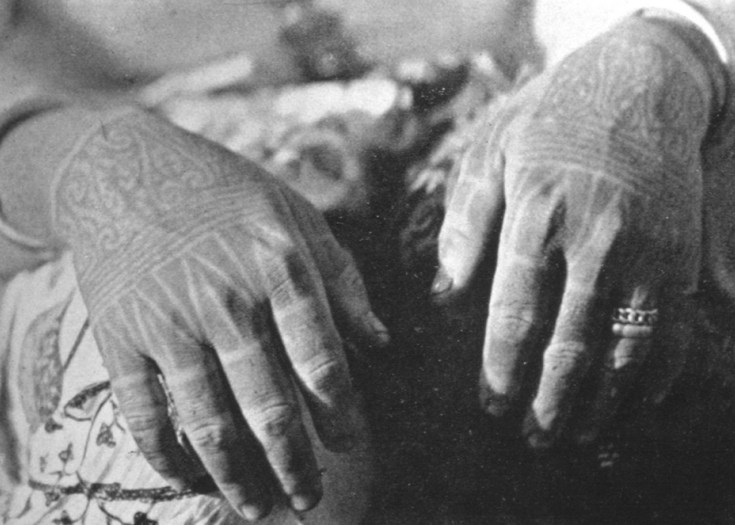
Source: Lars Krutak
From the ring ladies of Borneo to the tattoos of the Kayan women, these are the past beauty standards of local Sarawakians. Learn more about Sarawak's cultures here.
https://sarawaktourism.com/story/experience-the-iban-lifestyle/